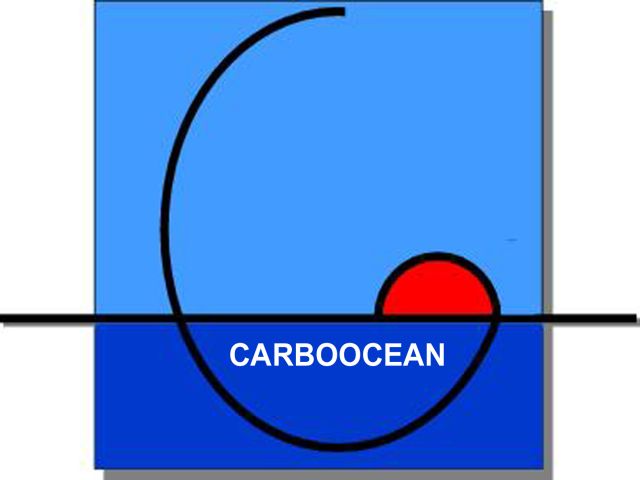|
Work Package 6: Model-based flux assessment
Leader: James Orr
Objectives
- To improve methods to interpolate pCO2 data in order to eventually provide basin-wide,
monthly estimates of seasonal to interannual variability of air-sea CO2 fluxes in near-real time.
- To improve the framework for quantifying and testing our understanding of seasonal to interannual
variability of air-sea CO2 fluxes as by improving ocean component models, and initiating
data assimilation activities.
Description of work
Interpolation of surface ocean pCO2 from VOS lines to provide basin-scale maps at quarterly or better time
intervals:
- Neural networks will be used to perform nonlinear interpolation to generate monthly maps of pCO2
fields. In addition to the pCO2 and ancillary data collected along the CARBOOCEAN VOS lines, the
method will rely on SST, mixed layer depths (ocean reanalysis data from the EU MERSEA-IP) and remotely
sensed data (ocean colour, surface wind speed, sea surface height). Ultimately, we aim to produce
monthly maps with a 1-month delay. (Partners 6, 20)
- Explore new approaches within the test-bed provided by a high-resolution circulation model of the North
Atlantic (IfM-Kiel) capable of reproducing observed variability in biological and physical surface properties.
Simulated pCO2 along VOS lines and simulated surface data equivalent to that seen by satellites for
the real ocean will be used to derive new dynamical interpolation methods. (partner 4)
These data-based maps will be used to help evaluate simulations of interannual variability.
Prognostic model improvements: We will quantify how simulated seasonal to interannual variability in the
air-sea CO2 and O2 fluxes changes with improvements to model biogeochemistry (e.g., particle
remineralization, nitrogen cycle) and physics (explicitly simulating eddies in high resolution models):
Assimilation of physical data: Study how assimilating altimetry and in-situ hydrographic data will alter
simulated air-sea CO2 and O2 fluxes (LEGOS cooperation with MERCATOR and EU MERSEA-IP project
on operational oceanography, using a global 1/4° model or a Northern-Atlantic version of the same model at
1/3°) Partner 6, 20).
Assimilation of remotely sensed biogeochemical data: Begin assimilation of the most relevant of new ocean
colour parameters now becoming available from recently launched remote sensing instruments in one ocean
model (ORCA/PISCES) going beyond present attempts to assimilate only chlorophyll concentration.
Validate results in terms of to seasonal to interannual variability of the air-sea CO2 flux. (Partner 6)
Simultaneous assimilation of biogeochemical and physical data: The AWI adjoint model has simultaneously
assimilated physical and biogeochemical ocean data to providing data-derived, annual mean patterns of
circulation, air-sea CO2 fluxes, and rates of export production and remineralization. Here we will go beyond
the current annual-mean approach, accounting explicitly for temporal changes in the upper water column and
thus seasonal variability. Also, one ocean model (NERSC) will address the feasibility of applying advanced
multi-variant schemes for assimilation of biogeochemical and physical data. (Partners 1, 3,). |

